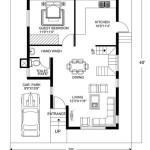Essential Aspects of My Indoor Basil Is Dying
Basil (Ocimum basilicum), a fragrant herb commonly used in various cuisines, has delicate indoor growing requirements. Here are the essential factors to consider when your indoor basil plant faces wilting:
1. Lighting:
Basil thrives in bright, indirect sunlight for at least six hours daily. Insufficient light can lead to weak, spindly stems and reduced leaf production. Ensure the plant receives adequate natural light by placing it near a south- or west-facing window. If natural light is limited, consider using grow lights to supplement.
2. Watering:
Basil requires consistent watering, but overwatering can be detrimental. Allow the top inch of soil to dry before watering thoroughly. Avoid leaving the plant in standing water, as this can lead to root rot. Use well-drained soil to prevent waterlogging.
3. Temperature:
Basil prefers warm temperatures between 65-75°F (18-24°C). Exposure to temperatures below 55°F (13°C) can cause leaf damage and stunting. Protect the plant from cold drafts and keep it away from air conditioning or heating vents.
4. Humidity:
Basil enjoys moderate humidity levels. Dry air can cause leaves to curl and become crispy. Increase humidity around the plant by misting regularly or using a humidifier. Alternatively, place the pot on a tray filled with pebbles and water, ensuring the base of the pot does not sit in water.
5. Fertilization:
Feed basil every few weeks with a balanced liquid fertilizer. Avoid over-fertilizing, as it can burn the roots. Use a fertilizer diluted to half strength and apply it according to the manufacturer's instructions.
6. Pests and Diseases:
Basil can be susceptible to pests such as aphids, whiteflies, and spider mites. Treat infestations promptly with neem oil or insecticidal soap. Diseases like basil downy mildew can cause yellowing and wilting leaves. Remove infected leaves and apply fungicide as per the label's instructions.
7. Pests and Diseases:
Basil can be susceptible to pests such as aphids, whiteflies, and spider mites. Treat infestations promptly with neem oil or insecticidal soap. Diseases like basil downy mildew can cause yellowing and wilting leaves. Remove infected leaves and apply fungicide as per the label's instructions.
8. Pruning:
Regular pruning encourages bushier growth and prevents the plant from becoming leggy. Pinch back the tops of stems to stimulate lateral growth. Remove yellowing or damaged leaves to maintain the plant's health.
9. Repotting:
As the basil plant grows, it may require repotting into a larger container with fresh potting mix. Choose a pot with drainage holes and fill it with well-draining soil. Water the plant thoroughly after repotting.
10. Natural Light:
Basil thrives in bright, indirect sunlight. Insufficient light can lead to leggy growth and sparse foliage. Ensure the plant receives at least six hours of sunlight per day. If natural light is limited, consider using grow lights to supplement.

Wilted Basil Can You Help Andrea Dekker

This Is Why Your Herbs Keep Dying And 5 Tips To Bring Them Back Life

Drooping Basil Indoors

Basil Dying

Why Is My Basil Plant Dying The Garden Bug Detroit

7 Surefire Ways To Bring Your Dying Basil Plants Back Life

How To Rescue A Dying Basil Plant Two Methods

The 10 Most Likely Reasons Your Basil Plant Keeps Dying A Z Animals

How To Save A Basil Plant With Time Lapse

Basil Heat Tolerance Managing Temperature For Growth Shrink That Footprint








